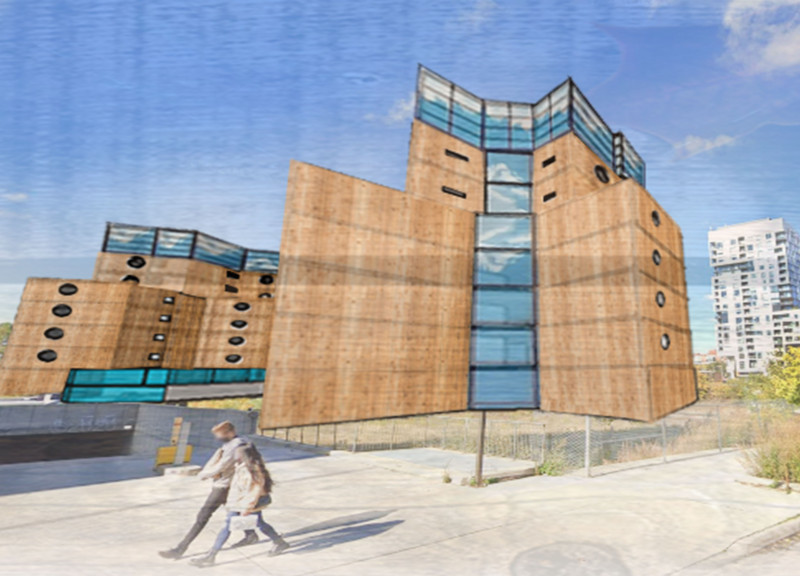5 key facts about this project
At its core, "Ve-tris" serves as a multifaceted residence, integrating various types of living spaces to accommodate a broad demographic. The project prioritizes versatility, evident in its spatial configurations, which allow for different layout options such as cozy studio apartments and more expansive family units. This design strategy ensures that the building fulfills the diverse lifestyle needs of its residents, while also promoting social interaction through shared communal areas. The layout is carefully structured to provide residents with both private retreats and communal gathering spaces, thus enriching their living experience.
One of the notable aspects of "Ve-tris" is its emphasis on the relationship between indoor and outdoor environments. The architecture strategically uses large windows and balconies, maximizing natural light and providing unobstructed views of the surrounding landscape. These design decisions not only enhance aesthetics but also create a pleasant living atmosphere that elevates the well-being of the occupants. By prioritizing natural light and cross ventilation, the building reduces dependency on artificial lighting and climate control systems, contributing positively to energy efficiency.
The choice of materials in “Ve-tris” reflects a commitment to sustainability and design integrity. Engineered wood cladding offers a warm, inviting appearance while promoting responsible building practices. The extensive use of glass enhances the building's connection to its environment, creating a seamless transition between the interior and exterior spaces. Concrete is utilized not only for its structural qualities but also for its ability to foster a sense of permanence and stability. Additionally, structural steel elements provide flexibility in design, enabling larger spacious floorplates that can accommodate innovative layouts and maximize usability for residents.
Unique design approaches evident in "Ve-tris" include a focus on community integration and sustainability. The project incorporates shared amenities that encourage social engagement and interaction among residents, reinforcing a sense of community. Facilities such as gardens, lounges, and recreational areas are designed to be easily accessible, promoting a lifestyle that values relationships and communal living. Furthermore, the building integrates eco-friendly systems, including energy-efficient HVAC options and rainwater harvesting features. These sustainable practices contribute to a reduced environmental impact, aligning with contemporary architectural practices that prioritize ecological responsibility.
In addition to its thoughtful design and functional characteristics, “Ve-tris” is deeply attuned to its geographical context. Located in an urban setting like Toronto, the project takes advantage of the city’s rich cultural landscape and accessibility to amenities, parks, and public transport. The building’s orientation and selected materials work harmoniously with its environment, ensuring that it not only blends into the urban fabric but actively contributes to the area’s dynamic character.
As readers explore the project presentation of "Ve-tris," they will discover how the architectural plans and sections illustrate these design ideas in detail. This exploration will reveal a well-rounded understanding of the architectural designs and approaches that shape the project. By delving into the presented information, one can appreciate the intricate balance between aesthetics, functionality, and sustainability that defines this architectural endeavor. Therefore, a closer look at the architectural elements will deepen one's insight into how "Ve-tris" exemplifies modern urban living through informed design choices.























